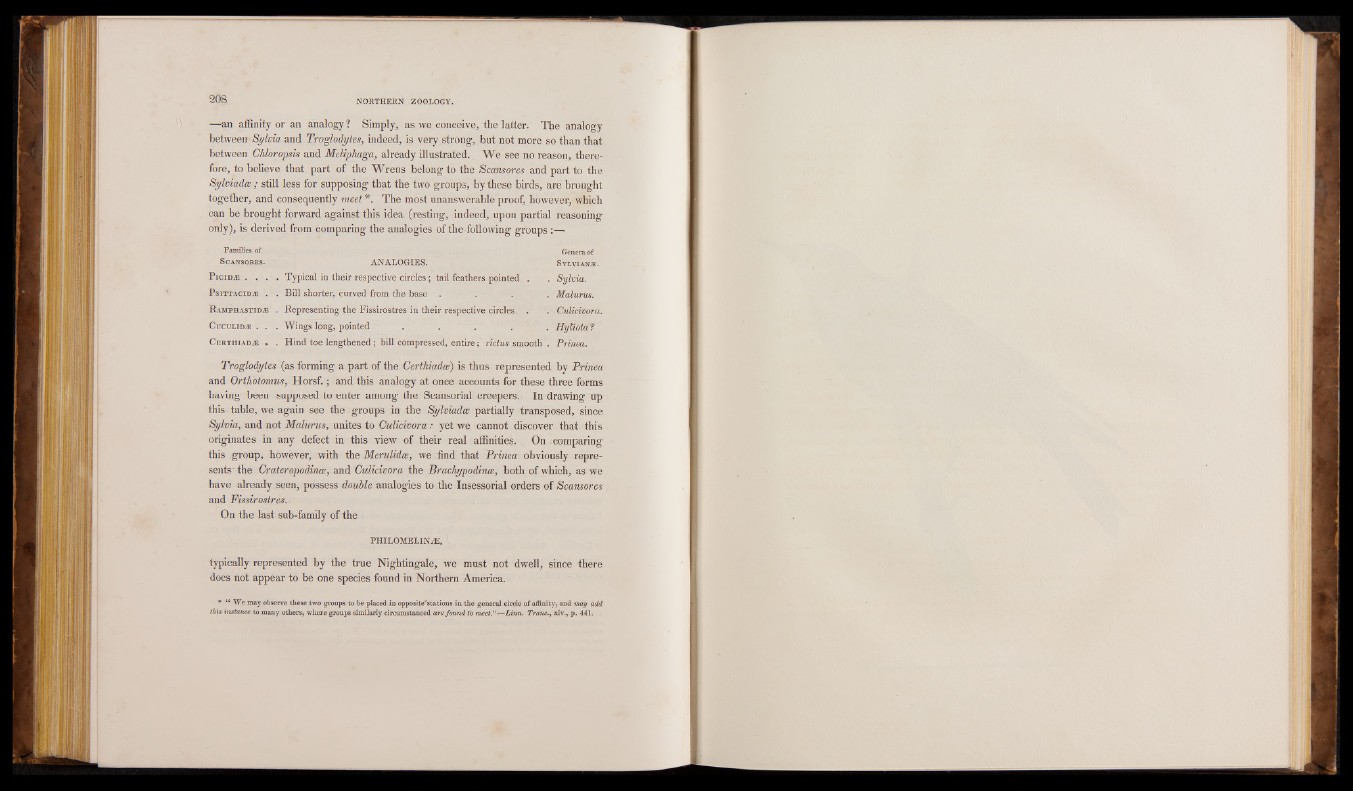
NORTHERN ZOOLOGY.
—an affinity or an analogy? Simply, as we conceive, the latter. The analogy
between Sylvia and indeed, is very strong, but not more so than that
between Chloropsis and Troglodytes,Meliphaga, already illustrated. We see no reason, therefore,
to believe that part of the Wrens belong to the Scansores and part to the
Sylviadas; still less for supposing that the two groups, by these birds, are brought
together, and consequently meet*. The most unanswerable proof, however, which
can be brought forward against this idea (resting, indeed, upon partial reasoning
only), is derived from comparing the analogies of the following groups
Families of.
Scansores.
ANALOGIES.
PlCID.ffi . . .
PsiTTA C IDiE .
R aMPHASTIDjE
C uCULIDjE . .
. Typical in their respective circles; tail feathers pointed .
. Bill shorter, curved from the base . . .
. Representing the Fissirostres in their respective circles. .
. Wings long, pointed . . . .
Genera of
Sylvian^:.
Sylvia.
Malurus.
Culicivora.
Hyliota?
C e r t h ia d2E • . Hind toe lengthened ; bill compressed, entire; rictus smooth . Prinea.
Troglodytes (as forming a part of the Certhiadw) is thus represented by Prinea
and Orthotomus, Horsf.; and this analogy at once accounts for these three forms
having been supposed to enter among the Scansorial creepers. In drawing up
this table, we again see the groups in the Sylmadas partially transposed, since
Sylvia, and not Malurus, unites to Culicivora: yet we cannot discover that this
originates in any defect in this view of their real affinities. On comparing
this group, however, with the Merulidw, we find that Prinea obviously represents'
the Crateropodince, and Culicivora the Brachypodince, both of which, as we
have already seen, possess double analogies to the Insessorial orders of Scansores and Fissirostres..
On the last sub-family of the
PHILOMELINJE,
typically represented by the true Nightingale, we must not dwell, since there
does not appear to be one species found in Northern America.
* “ We may observe these two groups to be placed in opposite'stations in the general circle of affinity, and may add
this instance to many others, where groups similarly circumstanced are found to meet."—Linn, Trans., xiv., p. 441.